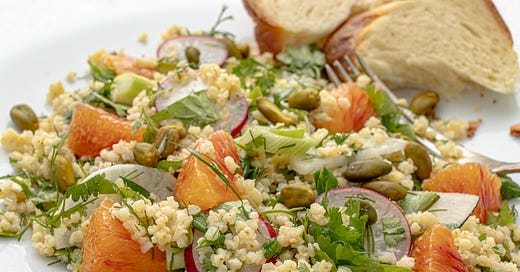Alternative Grains: Millet
Mastering the details in making basic millet pilaf unlocks limitless sweet and savory recipe creations.
Last year at this time, millet wasn’t on my list of things I needed to make as soon as possible. I also didn’t include it in my evolving writing plans; millet remained a grain I had fooled around wit…



